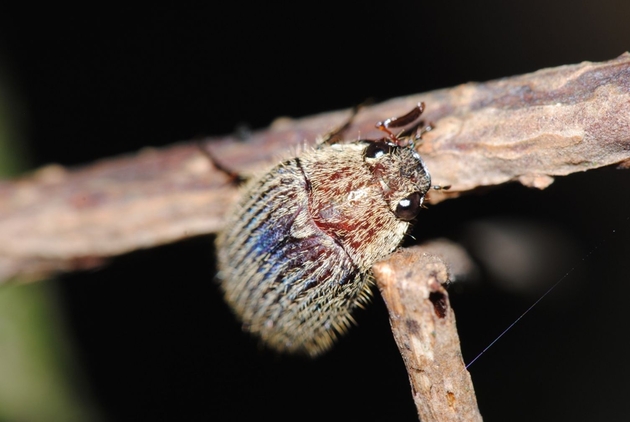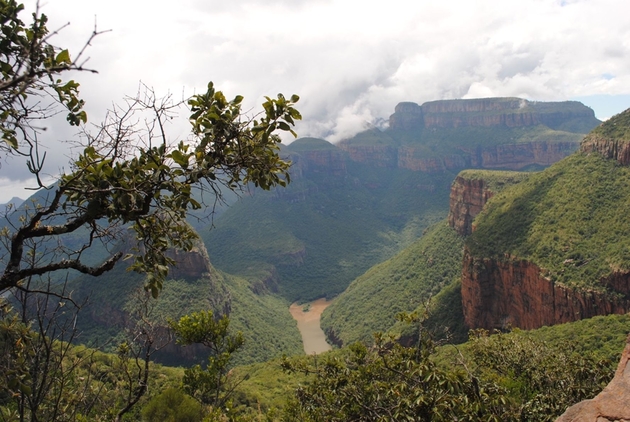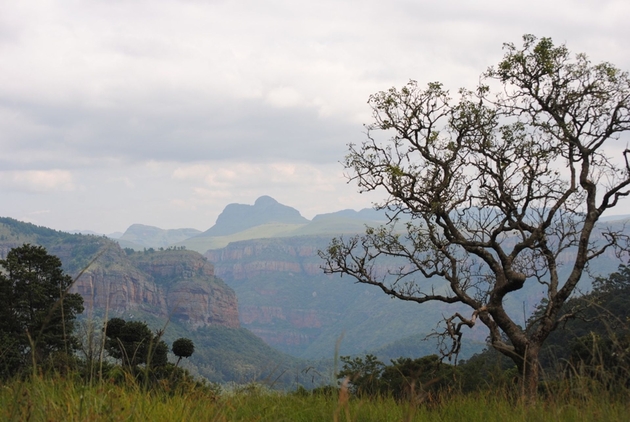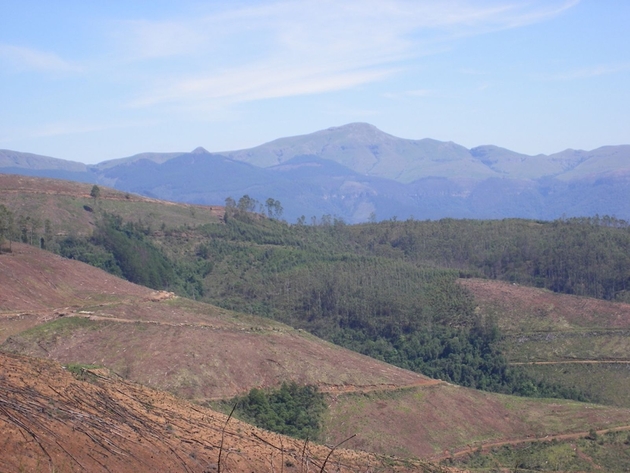Natural indigenous forests are rarely found in South Africa. They only cover 0.6% of the countries area and only survived in protected gorges and on mountain slopes. Among others, this is due to fires which are utilized to retain farmland but also to preserve the likewise ecologically valuable grassland and the typical South African fynbos (“fine bush”) vegetation. Despite their small extent these forests hold a rich flora and fauna, constituted of species that only occur there. This is also attributed to southern African climate which was relatively stable over long evolutionary time scales compared to other regions in the world. Also, a complex variety of small-scale local climates facilitated today’s biological diversity. Since this is true for forests as well as for other vegetation forms, there are ongoing debates on the natural extent of the threatened South African forest remains.
A study about forest-associated mini-cockchafers that was recently published by researchers at the Zoological Research Museum A. Koenig in the scientific journal Global Change Biology, now suggests a larger potential natural extent of indigenous forest than currently believed. Because beetles of the genus Pleophylla exclusively occur in forests and their larvae and adults are not restricted to specific plant species, their occurrence can be assumed representative for the forests distribution. Models based on currently known occurrences of the beetles and suitable climate showed that a much wider extent of forests would be possible and thus support previous similar findings of other researchers.
Projecting the models back to past climate revealed that South African forests naturally increased and decreased several times since the last glacial. Under certain conditions these fluctuations could even help to explain the enormous species richness found in South Africa, which might in some cases be the result of repeated isolation of populations.
However, the current minimum of forest cover is threatening, because human activities like fire and forestry impede the forest’s natural expansion. The high degree of fragmentation pushes many species to their maximum dispersal capacity, so that there are already isolated populations. This is confirmed by climate-model-based connectivity analyses as well as genetic data of the investigated beetles. Further diminution of forests or the eradication of stepping stone populations might thus lead to genetic impoverishment or extinction of many populations. The insights of the researchers from Bonn can be seen as a first step to a sustainable conservation of the threatened South African forest fauna in accordance with other valuable land forms, since they show concrete corridors that are well suited for efficient afforestation and high priority conservation of forest patches.
Contact:
Dr. Dirk Ahrens
Zoological Research Museum Alexander Koenig - Leibniz-Institute for Animal Biodiversity
Adenauerallee 160, 53113 Bonn
Phone: +49 228 9122 286
E-mail: d.ahrens [at] leibniz-zfmk.de
Original publication:
Eberle, J., Rödder, D., Beckett, M., and Ahrens, D. (2017) Landscape genetics indicate recently increased habitat fragmentation in African forest-associated chafers. Global Change Biology (2017), doi: 10.1111/gcb.13616
http://onlinelibrary.wiley.com/doi/10.1111/gcb.13616/abstract
Fotos:
Male beetle of Pleophylla silvatica searching for a mate. This species was newly discovered and described during the work on this publication.
Remainings of woodland in the huge gorges of the Blyde-River Canyons. In this regions the forests are mainly protected from fire and deforestation.
Mosaics of grasslands on the plains (background) and forest in the valleys are typical forms of vegetation in the region of South African escarpments.
Logging of a timber plantation: after harvesting these areas are generally burned down to remove dead wood because indigenous organisms are not able to decay the wood of the foreign tree species used for timber production. Other than northern hemisphere timber plantations, these sites where natural forest could grow, are “biological deserts” and no replacement habitats for forest species.
--------------
Das Zoologische Forschungsmuseum Alexander Koenig - Leibniz-Institut für Biodiversität der Tiere hat einen Forschungsanteil von mehr als 75 %. Das ZFMK betreibt sammlungsbasierte Biodiversitätsforschung zur Systematik und Phylogenie, Biogeographie und Taxonomie der terrestrischen Fauna. Die Ausstellung „Unser blauer Planet“ trägt zum Verständnis von Biodiversität unter globalen Aspekten bei.
Zur Leibniz-Gemeinschaft gehören zurzeit 91 Forschungsinstitute und wissenschaftliche Infrastruktureinrichtungen für die Forschung sowie drei assoziierte Mitglieder. Die Ausrichtung der Leibniz-Institute reicht von den Natur-, Ingenieur- und Umweltwissenschaften über die Wirtschafts-, Sozial- und Raumwissenschaften bis hin zu den Geisteswissenschaften. Leibniz-Institute arbeiten strategisch und themenorientiert an Fragestellungen von gesamtgesellschaftlicher Bedeutung Bund und Länder fördern die Institute der Leibniz-Gemeinschaft daher gemeinsam. Näheres unter www.leibniz-gemeinschaft.de











